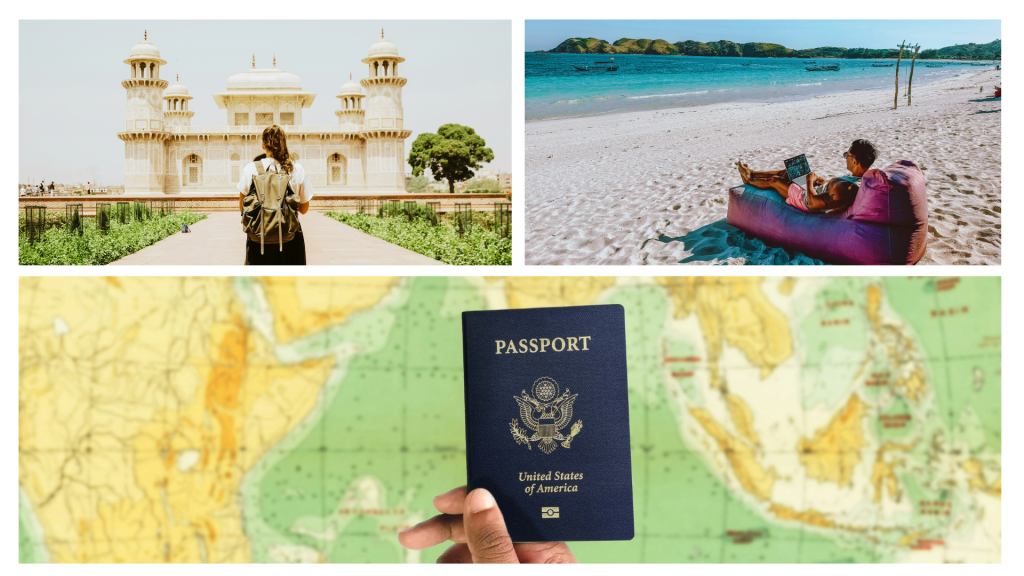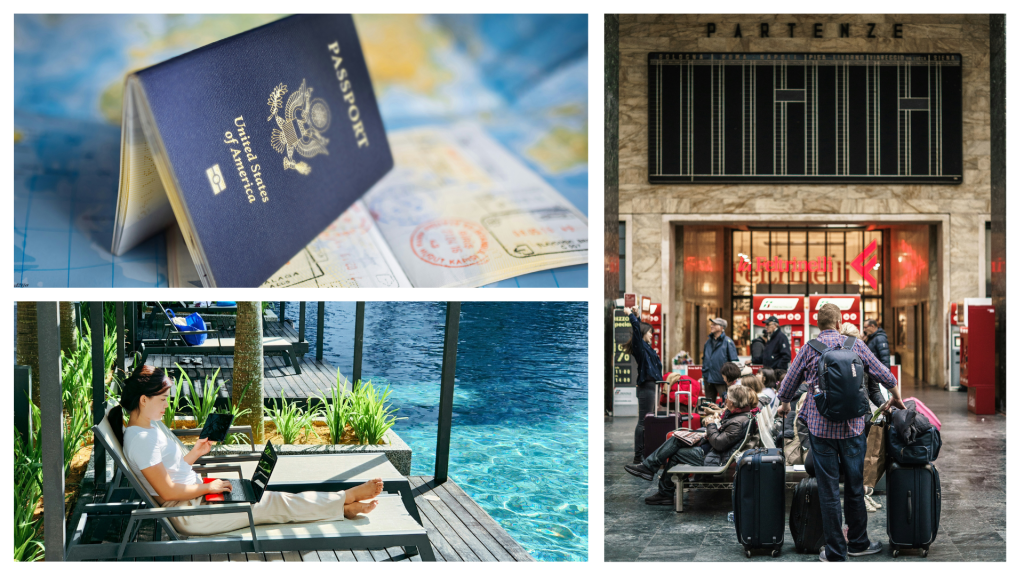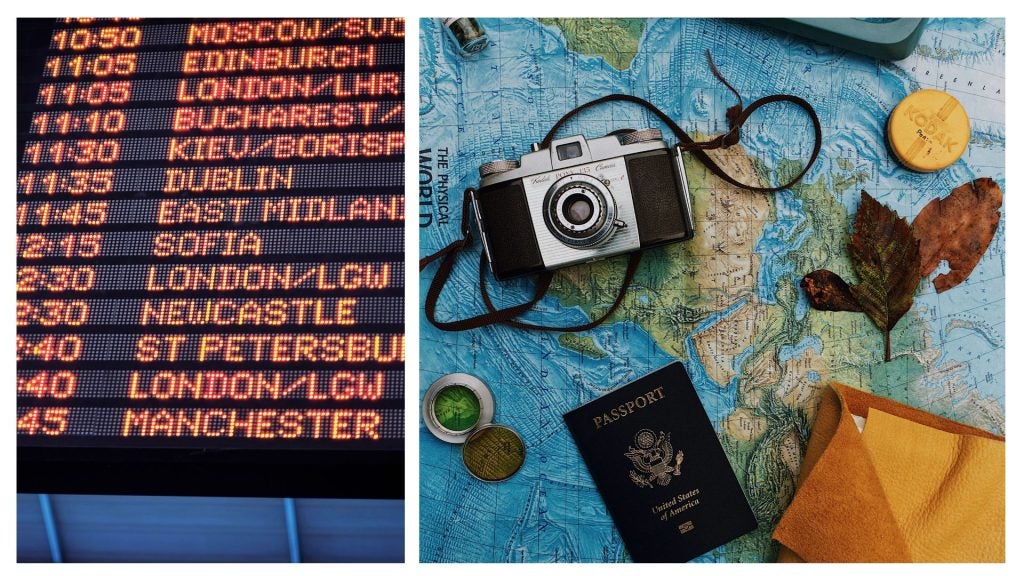What is a Digital Nomad Visa and How to Get One?
We clarify your doubts about the digital nomad visa, all the benefits, limitations and destinations that allow you to work with it.
In an increasingly interconnected world, the idea of working from any corner of the globe has gone from being a distant dream to becoming a reality. For many, the ability to combine work and adventure is a lifestyle that is now possible thanks to the digital nomad visa.
Imagine being able to live on a beach paradise, in a cosmopolitan city or in a quaint European village, all while keeping your job online.
If you dream of making the world your office and getting to know new destinations without interrupting your career, this article is just what you need. Here you will find out all about the digital nomad visa: what it is, how it works, what advantages it offers and everything you need to know to start your working adventure without borders.
What is a digital nomad visa?
The digital nomad visa is a type of temporary residence permit designed specifically for remote workers who wish to live in a foreign country while continuing their employment or professional activity, without the need to be physically present in the office.
This visa allows digital nomads, such as freelancers, independent workers, or employees of companies that do not require physical presence, to reside and work in the destination country for a certain period of time.
Origin and evolution of the digital nomad visa
The concept of the “digital nomad” has gained popularity in the last decade, driven by advances in communication technologies, which have enabled more people to work remotely.
However, it was not until early 2010 that the first government initiatives to facilitate the residence of these remote workers began to emerge.
In 2020, following the COVID-19 pandemic, the trend accelerated further, as many companies and workers permanently adopted the remote working model.
Although each country has its own requirements, digital nomads generally need to demonstrate that they have a job or source of income at a distance, which they can maintain during their stay in the destination country.

Main features of a digital nomad visa
Here are the most common features of a digital nomad visa, but remember that these may vary from country to country:
| Feature | Description |
| Duration | Usually between 6 months and 2 years. |
| Minimum income | Many countries require applicants to be able to demonstrate a minimum monthly income. |
| Remote working | The applicant is required to work for a company or clients outside the country where the visa is applied for. |
| Residence permit | It does not grant citizenship or permanent residence. |
| It does not grant access to the local labour market | In some countries you are not allowed to work for local companies. |
| Dependents | Some countries such as Estonia, Barbados, Portugal and Georgia allow digital nomads to bring their dependents, such as partners and children. |
Other names for the digital nomad visa
The digital nomad visa is known by different names in different countries, and to an extent each of these terms reflects the local approach to remote work and the migration policies of each nation. According to VisaGuideWorld these are the other names given to the visa by country:
| Country | Visa Name |
| Andorra | Andorra Digital Nomad Visa |
| Dominica | Work In Nature (WIN) |
| Mexico | Temporary Resident Visa |
| Anguilla | Work from Anguilla |
| Costa Rica | Visa rentista |
| Dubai (United Arab Emirates) | Work Remotely from Dubai |
| Montenegro | Digital Nomad Visa |
| Antigua and Barbuda | Nomad Digital Residence (NDR) |
| Ecuador | Visa rentista for remote work |
| Aruba | One happy workation |
| Argentina | Remote Work Visa (Visa de Trabajo a Distancia) |
| Estonia | Digital Nomad Visa |
| North Macedonia | Digital Nomad Visa |
| Brazil | Digital Nomad Visa |
| Bermuda Islands | Work from Bermuda Certificate |
| Georgia | Remotely from Georgia |
| Montserrat | Montserrat Remote Workers Stamp |
| Norway | Independent Contractor Visa |
| Bahamas | Bahamas Extended Access Travel Stay (BEATS) |
| Germany | Digital Nomad Visa |
| Panama | Short Stay Visa for Remote Workers (Visa de Corta Estancia para Trabajadores Remotos) |
| Portugal | D7 Visa |
| Barbados | Barbados Welcome Stamp |
| Greece | Greece Digital Nomad Visa |
| Romania | Romania Digital Nomad Visa |
| Belize | Belize Digital Nomad Visa |
| Hungary | White Card or DNV |
| Saint Lucia | St. Lucia Digital Nomad Visa/ Live It |
| Cayman Islands | Global Citizen Concierge Program |
| Colombia | Visa V Digital Nomads |
| Iceland | Iceland Digital Nomad Visa |
| Seychelles | Workation Retreat Program |
| Cape Verde | Remote Working Cape Verde |
| Indonesia (Bali) | B211A Visa |
| South Africa | South Africa Remote Work Visa |
| Curaçao | Temporary Stay Permit for Digital Nomads/Remote Workers |
| Italy | Freelancer Visa |
| Spain | Spain Digital Nomad Visa |
| Croatia | Croatia Digital Nomad Visa |
| Latvia | Latvia Digital Nomad Visa |
| Sri Lanka | Digital Nomad Visa |
| Czech Republic | Czech Digital Nomad Visa |
| Malta | Malta Nomad Residence Permit |
| Taiwan | The Taiwan Employment Gold Card |
| Uruguay | Digital Nomad Visa |
| Cyprus | Digital Nomad Visa Scheme |
| Mauritius | Mauritius Premium Visa |

What are the advantages of this specific visa for digital nomads?
1. Flexibility to work from anywhere
One of the most attractive advantages of the digital nomad visa is the flexibility to choose where to work from.
This means you can be on a tropical beach, in a cosmopolitan city or in a picturesque village, as long as you have access to the internet.
This type of visa is ideal for those seeking a balance between work and lifestyle, allowing them to see new places without interrupting their professional activity.
Did you know that it is possible to have high-speed internet connection and unlimited data without having to change your plastic chip at every destination and with no roaming charges? With Holafly’s data eSIM you will have worry-free connection to more than 100 destinations!

Important: If you are a frequent traveler and want to stay connected without worrying about expensive roaming or looking for a new SIM at every destination, Holafly’s subscription plans are for you. With a single eSIM, enjoy internet in more than 170 countries for a fixed price and no surprises on your bill. travel without limits and connect easily and securely! 🚀🌍

2. Tax benefits and tax relief
Some countries offer tax benefits for digital nomads, which can mean reduced taxation or even total exemption in some cases.
This depends on the tax laws of each nation, but generally countries with digital nomad visas seek to attract these foreign workers due to their contribution to the local economy.
3. Stability of remote working
With a digital nomad visa, you can continue to work remotely for your regular employers or clients.
This gives you the stability of a steady income while enjoying a freer and more flexible lifestyle. In addition, you can take advantage of the international environment to expand your professional network and access new job opportunities.
4. Opportunity to explore different cultures
In addition to the possibility of working, digital nomads can live in different countries, giving them a multicultural experience.
This enriches your personal life as much as possible and can broaden your professional perspective by learning about different markets and work styles.

Countries offering digital nomad visas
More and more countries are joining the trend of offering digital nomad visas. Some of the first countries to adopt this type of visa are:
- Estonia: was one of the first European countries to launch a digital nomad visa in 2020, with the aim of attracting remote workers.
- Barbados: offered the“12-Month Barbados Welcome Stamp“, allowing digital nomads to stay on the island for one year.
- Georgia: a popular destination for digital nomads, with very flexible conditions.
- Portugal: has created several visa options for remote workers, including for digital nomads.
For a more detailed list of the countries that offer this visa and their requirements, see our article oncountries that offer visas for digital nomads.
Validity of the digital nomad visa
It is generally valid for a limited period of time. Depending on the country, visas usually last between six months and two years.
Some countries allow renewals, while others set maximum periods of stay.
It is important to check the specific conditions of each country as the visa may have different terms depending on the migration policy of each nation.
How much does a digital nomad visa cost?
The cost varies from country to country. For example, Estonia has quite reasonable rates, while other countries, such as Barbados, have higher costs.
- Low fees: Some countries, such as Georgia, have very affordable or even free application fees.
- Average prices: countries such as Estonia have tariffs ranging from $100 to $300.
- High prices: some more exclusive destinations such as Barbados have fees of around US$2,000 per year.
Limitations of a digital nomad visa
While this specific visa offers many advantages, it also has some limitations that you should be aware of. These include restrictions on work, residence and use for certain purposes. Here we answer some of the most common questions:
| Can I obtain a permanent residence visa with a digital nomad visa? | No, this visa is not a direct route to permanent residence. It is a temporary visa that allows remote working, but does not grant the rights associated with a traditional residence visa. |
| Can I study with a digital nomad visa? | The visa is not designed for study, but some countries allow digital nomad visa holders to take courses or participate in informal educational activities, but not in full-time programmes. |
| Can I work for a local company with a digital nomad visa? | No. Most digital nomad visas are designed for you to work for a company or clients outside your country of residence. Working for a local company could violate the terms of your visa. |

Frequently asked questions about the digital nomad visa
Yes, many countries allow you to renew your digital nomad visa if you meet the requirements, such as proving that you continue to work remotely and have the means to support yourself. But remember that each country has its own renewal criteria and deadlines.
It depends on the country. Some countries have specific visas for retirees, but they are not the same as the digital nomad visa. Generally, digital nomad visas require you to be working remotely, while retiree visas are intended for people who are not actively working.
In many countries, digital nomads can bring their dependents, such as spouses and children, under certain conditions. However, some countries require dependents to present a separate visa or meet additional requirements.
The duration of the digital nomad visa varies from country to country, but in general, visas can be for six months to two years, with the possibility of renewal if you meet the requirements. Some countries allow the visa to be renewed indefinitely, while others have a limit.
Yes, in most countries you can open a bank account, although the requirements vary. Some countries require you to have a local address or meet certain documentation requirements before you can open a bank account.
This requirement varies from country to country, but generally the income must be above the poverty line of the host country, which can be anywhere from $1,000 to $3,000 per month.
Not necessarily. In most cases, being pregnant should not be an obstacle to obtaining a digital nomad visa. Be sure to check the conditions in each country, as some have specific health or insurance requirements that may require special attention if you are pregnant.
Yes, as long as you are working remotely and are not employed by a company in your home country, you can continue to work with clients in your home country without any problems. The important thing is that you are not offering direct employment services to local companies in the country where you live.
You could face sanctions or deportation. It is essential to respect visa deadlines and leave the country before they expire, or apply for an extension if possible. Some countries may impose fines or ban future entry if you exceed the time allowed.





 Language
Language 


















 No results found
No results found







